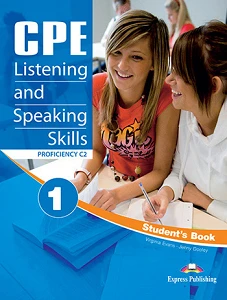Students don’t develop their listening skills only by doing listening exercises. They listen to you when you’re explaining, presenting, or giving feedback. They listen to each other in pairs, groups or whole class activities.
When in class, listening may include students listening to their teachers sharing stories or jokes, which are intrinsically interesting.
Real-life listening in the classroom
Although listening exercises help students practice identifying sounds, intonation patterns and combinations at the word and sentence level there is something important that is missing: conversational listening.
Conversational listening is about real-time interaction and constantly monitoring what to respond to. The conversation is transactional, a negotiated process of give and take. Listening is an active skill and we should give classes real–time conversation opportunities in which students talk to each other.
Why is it important to provide real–life listening situations in the classroom?
In real life, we usually have a purpose in listening as well as expectations of what we are about to hear. We have a mental script based on our background knowledge of the subject and discourse type. You can imagine what might follow from these beginnings: “Once upon a time there lived a princess…”, “An Englishman, an Irishman and a Scotsman went…”. Students need a lot of exposure to natural-sounding, authentic speech to help them with their worries about speakers talking too fast and not being able to distinguish every word.
Here are 5 tips that you can do to practice real-life listening with your students:
- Pre-listening activities.
Some introductory activities help students shape a better perception of the topic and increase concentration and motivation. - Brainstorming.
Brainstorm similar vocabulary on the subject: Discuss the theme in the listening text, and give a specific reason for listening – e.g. “find out these three things…” - Create a setting.
Introduce texts by giving some background information about what they are going to hear, who is speaking to whom and about what. Setting the context helps learners activate their relevant schemata (i.e. previous knowledge and concepts) to build some anticipatory scaffolding which helps them in deeper understanding. - Speak English!
Real people speaking spontaneously (yes, that means you) and videos are probably better than purely audio input. We usually have some visual links to what is being said and this makes it easier; we see the speakers (their expressions, gestures and body language) and the general environment in which the speaking occurs. - Follow-up.
Listening practice is not over when the activity is over. Check and discuss answers and probably proceed to further work on either the theme/topic or the language.
Here are some keywords for what happens before, during and after listening:
Contextualization, motivation, attention, perception, comprehension, interaction, transaction, completion, extension.
.png)












